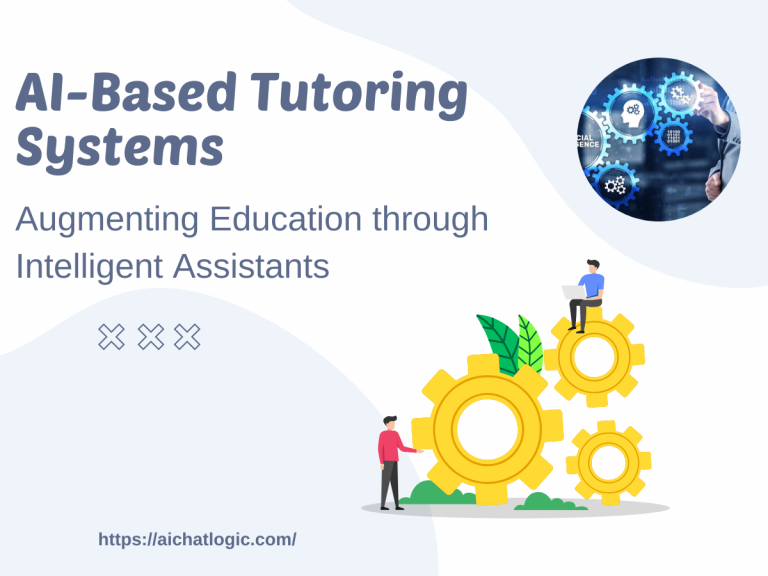1. Introduction: The Power of Coding with ChatGPT
In the ever-evolving landscape of programming, developers are constantly seeking innovative tools and techniques to streamline their coding process. One such groundbreaking technology that has gained significant attention is ChatGPT. This powerful language model developed by OpenAI is revolutionizing the way developers code by offering advanced natural language processing capabilities. In this article, we will explore how you can master coding techniques with ChatGPT, uncovering tips and tricks that will boost your productivity and elevate your coding skills to new heights.
2. Understanding the Basics: What is ChatGPT?
ChatGPT is an AI-powered language model that uses deep learning techniques to generate human-like text responses. It is trained on vast amounts of data from the internet, enabling it to understand and generate coherent and contextually relevant responses. ChatGPT has gained popularity due to its ability to perform a wide range of tasks, including code generation, natural language understanding, and even engaging in conversational interactions.
3. Getting Started with ChatGPT: Setting Up Your Environment
Before diving into the coding techniques, it’s essential to set up your environment to work with ChatGPT effectively. Start by installing the required dependencies and libraries, such as Python and the OpenAI API client. You’ll also need to obtain an API key from OpenAI to access the ChatGPT model.
Once your environment is set up, you can make API calls to ChatGPT and receive responses in real-time. Remember to handle authentication and rate limits appropriately to ensure a smooth experience.
4. Essential Coding Techniques with ChatGPT
4.1. Using Natural Language Processing for Text Analysis
One of the key strengths of ChatGPT is its ability to understand and analyze text. By leveraging its natural language processing capabilities, you can utilize ChatGPT for a variety of text analysis tasks. Whether it’s sentiment analysis, keyword extraction, or topic modeling, ChatGPT can assist you in gaining valuable insights from textual data.
To perform text analysis, you can pass your text data to ChatGPT and utilize its responses to extract relevant information. By combining ChatGPT’s language understanding with your coding skills, you can build powerful text analysis applications.
4.2. Generating Code Snippets with ChatGPT
ChatGPT can be a valuable asset when it comes to generating code snippets. By providing a high-level description of the functionality you desire, ChatGPT can generate code that aligns with your requirements. This technique can significantly accelerate your development process by automating code generation for repetitive or complex tasks.
To generate code snippets, you can prompt ChatGPT with a clear explanation of the desired functionality. It’s crucial to iteratively refine and optimize the generated code based on your specific requirements and best coding practices.
4.3. Improving Efficiency with Automated Debugging
Debugging is an integral part of the coding process, and ChatGPT can be an excellent companion in this area as well. By describing the issue or error you’re encountering, ChatGPT can provide insights and suggestions to help you troubleshoot and resolve problems more efficiently.
To utilize ChatGPT for debugging purposes, clearly articulate the problem and provide relevant context. ChatGPT’s responses can serve as a starting point for further investigation and experimentation to identify the root cause of the issue.
4.4. Enhancing User Experience with ChatGPT
Integrating ChatGPT into your applications can offer a more interactive and engaging user experience. By leveraging ChatGPT’s conversational abilities, you can create chatbots, virtual assistants, or even interactive tutorials that assist users in navigating your software.
When incorporating ChatGPT into user-facing applications, consider the conversational flow, error handling, and ensuring a seamless integration with the rest of your codebase.
4.5. Integrating ChatGPT into Web Applications
Web applications can greatly benefit from the integration of ChatGPT. By integrating ChatGPT’s language model into your web app, you can offer features like smart search, automated responses to user queries, and content generation.
To integrate ChatGPT into your web application, leverage the OpenAI API to make API calls from your backend and process the responses to provide relevant information or actions to your users.
5. Advanced Tips and Tricks for Mastering Coding Techniques with ChatGPT
5.1. Utilizing Transfer Learning for Customized Solutions
While ChatGPT offers powerful capabilities out of the box, you can further enhance its performance by fine-tuning it on domain-specific datasets. By leveraging transfer learning techniques, you can adapt ChatGPT to better understand and generate code specific to your programming language or problem domain.
To utilize transfer learning, prepare a dataset containing code examples relevant to your target domain. Fine-tune ChatGPT using this dataset to create a customized model that aligns with your specific requirements.
5.2. Handling Unstructured Data with ChatGPT
Unstructured data can pose challenges when it comes to coding. However, with ChatGPT’s natural language processing capabilities, you can effectively handle unstructured data and extract valuable insights.
To process unstructured data, leverage ChatGPT’s text analysis capabilities and apply techniques like named entity recognition, part-of-speech tagging, or dependency parsing. These techniques will help you understand the structure of the text and extract relevant information for further processing.
5.3. Implementing Machine Learning Algorithms
Machine learning algorithms play a crucial role in various coding tasks, such as predictive modeling, pattern recognition, and data analysis. ChatGPT can assist you in implementing and optimizing machine learning algorithms by providing insights, suggesting best practices, and generating code snippets.
When working with machine learning algorithms, clearly define your problem, select appropriate algorithms, and leverage ChatGPT’s expertise to fine-tune the models or optimize hyperparameters for improved performance.
5.4. Scaling Up with ChatGPT: Distributed Computing
As your coding projects grow in complexity, you may encounter the need for distributed computing to handle large-scale data processing or resource-intensive tasks. ChatGPT can help you navigate the challenges of distributed computing by providing guidance and assisting in designing efficient distributed systems.
To scale up your coding projects, explore distributed computing frameworks and architectures while considering factors like fault tolerance, load balancing, and data partitioning. Leverage ChatGPT’s capabilities to optimize your distributed systems and maximize performance.
6. Frequently Asked Questions (FAQs)
6.1. Can ChatGPT be used for software development in any programming language?
Yes, ChatGPT can be utilized for software development in various programming languages. Its natural language processing capabilities enable it to understand code-related queries and generate code snippets regardless of the programming language.
6.2. Is ChatGPT capable of understanding complex coding concepts?
Yes, ChatGPT has been trained on vast amounts of data, including programming documentation and examples, allowing it to understand and handle complex coding concepts. However, it’s important to note that ChatGPT’s understanding is based on patterns and examples it has learned and may not possess deep domain-specific knowledge.
6.3. How does ChatGPT handle large codebases?
ChatGPT can assist with large codebases by generating code snippets, providing debugging suggestions, and offering insights based on the context and prompts provided. However, for comprehensive code analysis or large-scale codebase management, specialized tools and techniques may be more suitable.
6.4. Can ChatGPT assist with code documentation and comments?
Yes, ChatGPT can assist in generating code documentation and comments. By providing clear prompts and context, ChatGPT can generate informative comments and explanations that can enhance the readability and understandability of your code.
6.5. What are the potential limitations of using ChatGPT in coding?
While ChatGPT is a powerful tool for coding, it’s essential to be aware of its limitations. ChatGPT may generate code that works but may not always produce optimal or best-practice solutions. It’s crucial to review and validate the generated code and consider it as a helpful suggestion rather than a definitive solution.
7. Conclusion: Empowering Your Coding Skills with ChatGPT
Mastering coding techniques with ChatGPT opens up a world of possibilities for developers. By harnessing the power of natural language processing and leveraging ChatGPT’s capabilities, you can streamline your coding process, generate code snippets, improve debugging efficiency, enhance user experience, and create innovative applications.
Remember, ChatGPT is a tool that complements your coding skills and expertise. It empowers you to code smarter and more efficiently. By integrating ChatGPT into your workflow and applying the tips and tricks shared in this article, you can take your coding skills to new heights and stay at the forefront of technological advancements.












+ There are no comments
Add yours